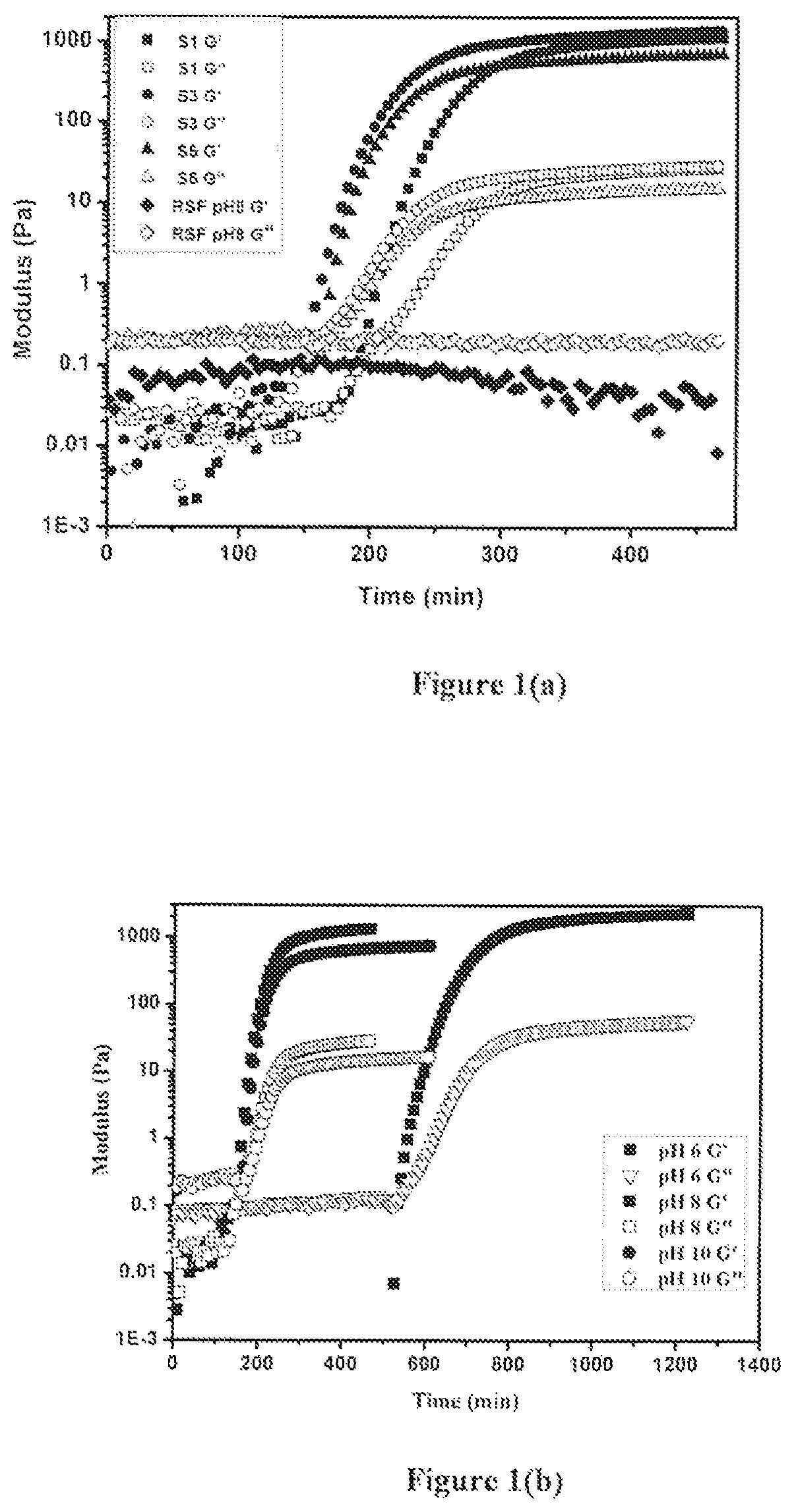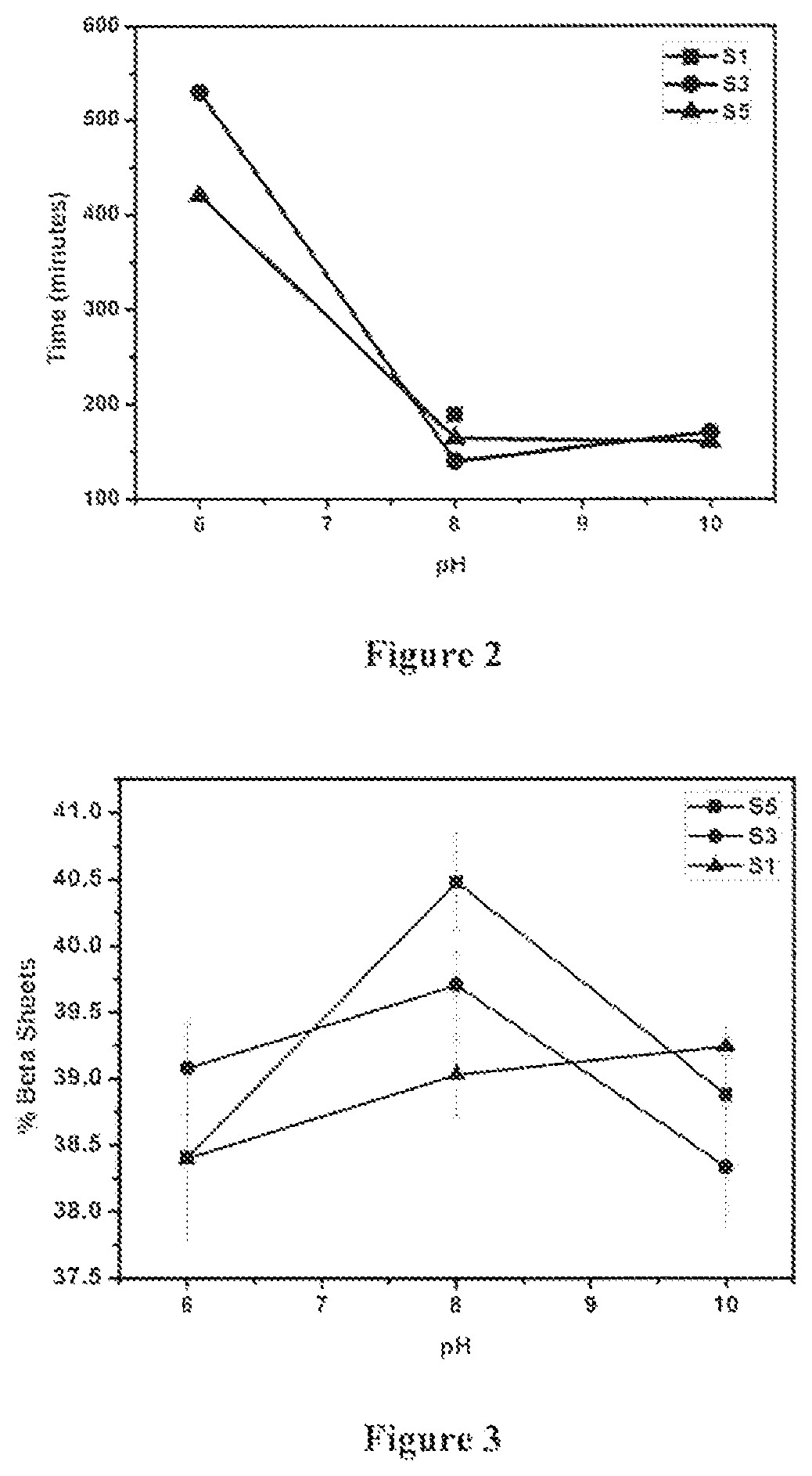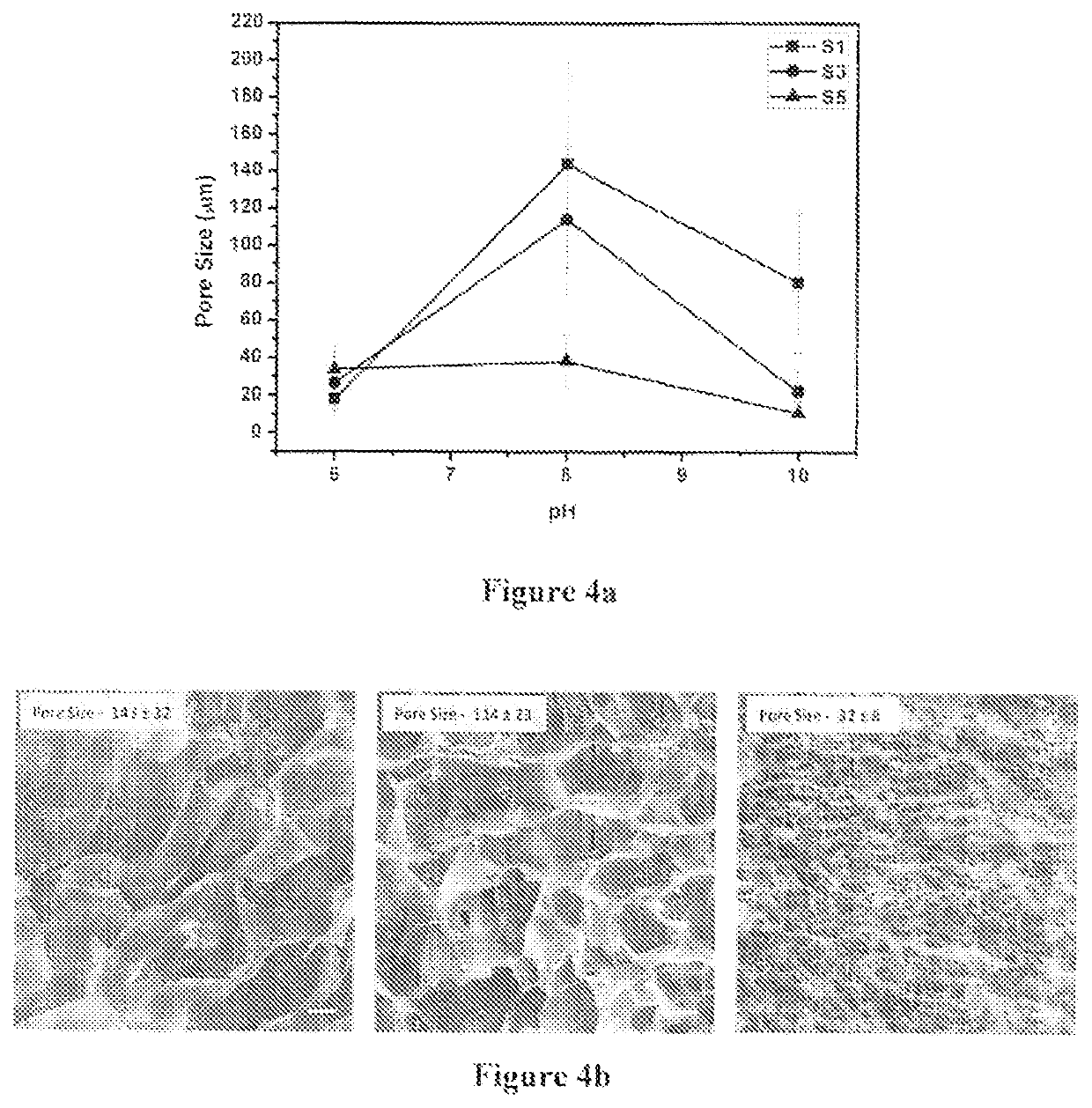Sophorolipid mediated accelerated gelation of silk fibroin
a technology of silk fibroin and sophorolipids, applied in the field of biocompatible hydrogel compositions, can solve the problems of unsatisfactory additives, reduced gelation time in limited fashion, non-physiological methods, etc., and achieve the effect of accelerating silk fibroin gelation and reducing the gelation time of silk fibroin solution
- Summary
- Abstract
- Description
- Claims
- Application Information
AI Technical Summary
Benefits of technology
Problems solved by technology
Method used
Image
Examples
example 1
[0053]Preparation of Regenerated Silk Fibroin
[0054]Regenerated silk fibroin solutions were prepared from bivoltine Bombyx mori cocoons that were procured from Central Seri cultural Research and Training Institute, Mysore, India. The cocoons were boiled in 0.05 w / v % of NaHCO3 solution twice for 30 mins each to remove sericin. The extracted fibroin mass was then dissolved in 9.3 M Lithium Bromide (Sigma Aldrich) solution at 60° C. for 4 h. The solution was then extensively dialyzed for 48 h with at least 6 changes of water to ensure complete removal of the salt. This Regenerated Silk Fibroin (RSF) solution was adjusted to concentration of 30 mg / mL before use in all further experiments. The final concentration of the RSF solution after dialysis was determined by weighing the remaining solid of a known volume of RSF solution that was dried at 60° C. in a vacuum oven and was approximately indicated to be 5% (w / v). For the purposes of the instant invention 3% silk solution was prepared b...
example 2
[0055]Preparation of Sophorolipid Solution
[0056]Oleic acid derived sophorolipid was synthesized by supplementing Candida bombicola (ATCC 22214) using glucose and oleic acid employing the method described by Van Bogaert et al 2007. To study the effect of sophorolipid concentration on the gelation time of RSF solutions and thereafter to utilize the efficient concentrations of both the ingredients in a composition, oleic acid derived sophorolipid solutions were prepared at different concentrations i.e. 10, 30 and 50 mg / mL respectively. The pH of each concentration solution was set at 6, 8 and 10, using 0.1 N NaOH and then used for further experiments.
example 3
[0057]Preparation of Hydrogels
[0058]The silk fibroin solution prepared in Example 1 and sophorolipid solutions at different pH prepared in Example 2 were mixed in various ratios and allowed to stand till gelation. The prepared mixtures were characterized for their rheological properties. The experiment was started immediately after mixing the required quantities of SF solution into the pH adjusted SL solution. The cross-over of G′ and G″ was considered to be the gelation time (FIGS. 1a, b). Increasing concentration of SL in the mixture resulted in decrease in gelation time until a limit, beyond which further reduction in gelation time was not observed. Gelation at pH 6 was prolonged as compared to pH 8 and pH 10 (FIG. 2). The hydrogels obtained in Example 3 were further characterized for % beta sheets as a function of SL concentration.
[0059]FIG. 3 depicts that increasing SL concentration assisted in higher % beta sheets in the hydrogel.
PUM
| Property | Measurement | Unit |
|---|---|---|
| pore size | aaaaa | aaaaa |
| pH | aaaaa | aaaaa |
| pH | aaaaa | aaaaa |
Abstract
Description
Claims
Application Information
 Login to View More
Login to View More - R&D
- Intellectual Property
- Life Sciences
- Materials
- Tech Scout
- Unparalleled Data Quality
- Higher Quality Content
- 60% Fewer Hallucinations
Browse by: Latest US Patents, China's latest patents, Technical Efficacy Thesaurus, Application Domain, Technology Topic, Popular Technical Reports.
© 2025 PatSnap. All rights reserved.Legal|Privacy policy|Modern Slavery Act Transparency Statement|Sitemap|About US| Contact US: help@patsnap.com



